When it comes to perfecting mining operations across the diverse geography of Africa’s broad landscape – nothing beats the longevity and durable power of a genuine Mesabi® radiator.
Nearly half of the world’s gold reserves exist on just one continent – and that doesn’t even begin to encapsulate just how many metals, minerals, and oil and gas reserves Africa holds underneath its rich landscape. Harvesting these resources isn’t easy. That’s why mining operations in Africa lean on Mesabi® radiators and coolers.
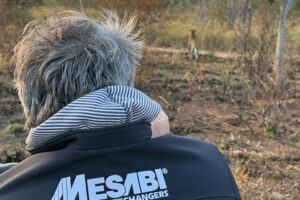
With the equator running through the middle of the continent, Africa offers a wide range of environments, from the dry, sandy heat of the Sahara Desert and the semi-arid plains of the Sahel region to the towering mountains and plunging valleys of the Ethiopian Highlands and the wet rainforests of Central Africa, to the grassy plains of the Savannah.
What lies under the ground is equally as diverse. Africa’s breadth of underground resources is unmatched by few other regions of the world. According to the United Nations, approximately 90% of the world’s chromium and platinum, 40% of the world’s gold, 8% of the world’s natural gas, and 12% of the world’s oil reserves are hidden beneath the continent’s crust.
Libya, Nigeria, Algeria, Egypt, Gabon, the Republic of the Congo, and Angola dominate the continent’s export of petroleum; Mauritania and Liberia are known for their bountiful iron ore deposits; and Zambia and the Democratic Republic of the Congo lead the continent’s production of copper, according to a report by Britannica.
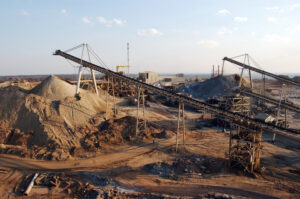
But with plentiful resources comes unrelenting demand. And only genuine Mesabi radiators are up for the task. In comparison to the ease of serviceability and cleaning, incomparable durability, and long-lasting lifespan of a Mesabi radiator (often outlasting more than two engine lives of a machine) — copycat radiators just don’t cut it.
“I see Mesabi coolers as the race cars of heat exchangers,” said Aron Alberts, L&M Radiator’s Sales Representative for Africa. “If you want to go do some professional racing, you need to have a race car. It’s the same when choosing what radiator goes on your machines in a mine. When people buy non-Mesabi parts they assume they’ve ‘saved money.’ But those parts don’t last half as long as genuine Mesabi parts. The bottom line is — if you really want to make money, you need a genuine Mesabi radiator.”
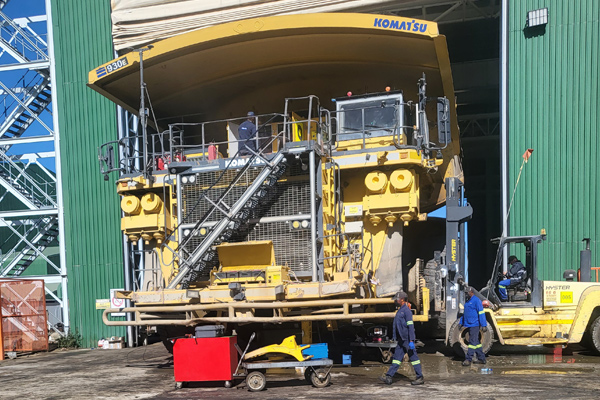
Mesabi Radiators Drive Material Extraction Across the Continent
Because so many people want in on the action, many of the large companies that own mining sites in Africa are not necessarily African companies themselves. Many are European or North American. Take Rio Tinto, an Anglo-Australian company, or Barrick, headquartered in Ontario, Canada, for example. Rio Tinto’s Richards Bay Minerals Operation is the largest producer of mineral sands in South Africa. The company has a focus on producing zircon, rutile, iron, and slag. Barrick, on the other hand, is the largest gold producer in Africa. According to Barrick’s 2022 annual report, Barrick’s two largest gold mines, Loulo-Gounkoto in Mali and Kibali in the Democratic Republic of the Congo (the DRC) produced 884,000 attributable ounces of gold in 2022.
Though headquartered in wildly different parts of the world and with distinct material focuses, Rio Tinto and Barrick do have one thing in common – they both run Mesabi radiators on their mining haul trucks, dozers, drills, and more.
“Usually, wherever mining or heavy industrial machines are, you’ll find Mesabi radiators there, too,” said Alberts. “In a lot of situations, companies have mine sites all over the world, and they know Mesabi radiators are the best option no matter what environment or what country a mine is located. So, they ask to run Mesabi radiators in their mines in Africa, as well.”
But these companies aren’t the only ones running Mesabi. Because some of the largest heavy-duty equipment manufacturers, such as Caterpillar, Komatsu, and Liebherr, have Mesabi radiators specified at the OEM level, it’s not unlikely that you’ll find a Mesabi radiator on any given mine site in the continent. Here are a few of the mining operations in Zambia and the Democratic Republic of the Congo (DRC) that are equipped with Mesabi radiators:
Zambia – In Zambia, the majority of mines are large, open pit operations. Here, you’ll find Mesabi radiators on Sentinel Copper Mine (also called Kalumbila Mine) owned by FQM Trident Ltd, Lumwana Copper Mine owned by Barrick Gold, and Kansanshi Copper and Gold Mine, majority owned by FWM, among others.
Democratic Republic of Congo (DRC) – You’ll find Mesabi radiators on mining operations all around the DRC. In particular, you’ll find them at Tenke Fungurume Mine, a copper and cobalt mine owned by CMOC Group Unlimited; Frontier Copper Mine, owned by Eurasian Resources Group (ERG); Sicomines Copper-Cobalt Project (also known as Dikuluwe Copper and Cobalt), owned by a consortium of Chinese companies led by Sinohydro and China Railway Group according to the South China Morning Post; and Kibali Gold Mine, co-owned by AngloGold Ashanti (45%), Barrick Gold Corporation (45%) and SOKIMO (10%).
South Africa – The largest platinum mine in the world is located in South Africa. Named Mogalakwena after the municipality it resides in, this mine was established in 1993 by Anglo American. This mine is not only famous for its sheer size, but also for its innovative use of machines that can be refueled with self-made hydrogen. The mine recently introduced the First Generation Hydrogen Hybrid large Mining Haul truck by First Mode, complete with a cooling system designed and built by L&M Radiator using the latest genuine Mesabi systems.
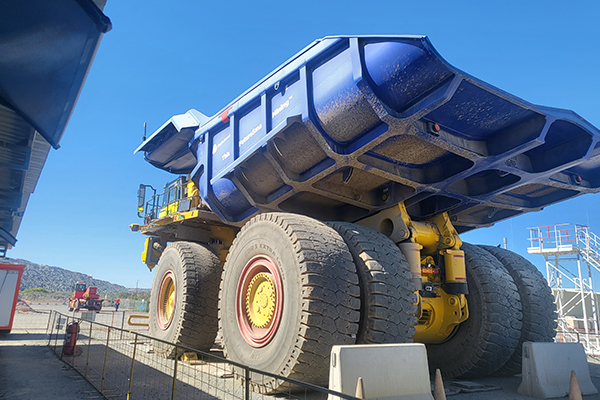
Only Genuine Mesabi Radiators Can Take the Heat
But if a mine isn’t running Mesabi…you can tell.
“If you really want to run a successful mine in Africa, you have to have robust equipment that keeps your downtime to a minimum – and that’s a Mesabi radiator,” said Alberts. “The best-run mines will have a fleet of Mesabi radiators on their trucks – excavators, loaders, dozers, and otherwise – because that equipment is moving ore and dirt from one place to another. To do a job like that, you don’t just buy the cheapest equipment possible, you buy the equipment you can use forever because you need that tool.”
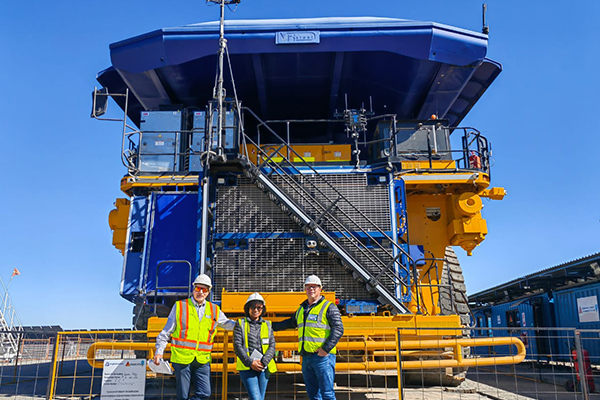
When it comes to Mesabi — accept no substitutes. Mesabi-like radiators won’t work. Not to mention, you can’t insert tubes from other manufacturers into a Mesabi radiator. Because of the remote locations of some of these mines, Alberts advises mines to stock up on genuine Mesabi tubes and seals that are sized correctly for their Mesabi radiator. If a machine becomes damaged and you need new tubes, you won’t want to have to wait for them to travel all the way to the remote location of any given mine — you’re going to want to have them on hand.
“Because so many of these mines are so remote and isolated, I often emphasize the importance of acquiring the necessary components and parts well before you need them, in order to have quick access,” said Alberts. “When a machine requires repair, every hour of downtime is costing that mine. That is why we make our tubes easily repairable in the field, to minimize downtime as much as feasibly possible. But, if a mine doesn’t have the correct genuine Mesabi parts on hand, the backup plan is often buying cheaper parts. Not only does that not work, but it actually hurts operations in the long run.”
No matter if your operation site is riddled with sweltering heat, smothered in coal dust or caked with sandy debris, one thing is for sure – There is an inimitable quality to a Mesabi radiator that just can’t be beaten. Backed by 65 years of powering machines for the mining, oil and gas industries, no worksite runs smoother than the ones that run genuine Mesabi.
L&M Radiator: Powering Operations Around the Globe
For more stories about Mesabi radiators bringing success to mining, oil and gas operations across the world, visit The Mesabi Exchange on www.Mesabi.com

